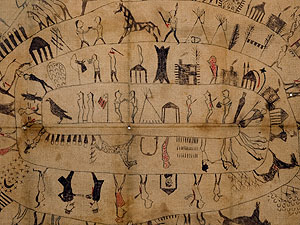Proof positive: A woman in Minnesota recently found a notebook belonging to her great-grandmother. The notebook contained the "transcript of the pictorial history of the Sioux nation as kept by the White Horse family. Told by Chief White Horse of White Horse Station, Cheyenne River Indian Reservation, South Dakota, on September 8th, 1910." Hear more about this wonderful rediscovery on Minnesota Public Radio.

This blog post reflects the opinions of the author and does not necessarily represent the views of Brooklyn Public Library.
Post a Comment
While BPL encourages an open forum, posts and comments are moderated by library staff. BPL reserves the right, within its sole discretion, not to post and to remove submissions or comments that are unlawful or violate this policy. While comments will not be edited by BPL personnel, a comment may be deleted if it violates our comment policy.
eNews Signup
Get the latest updates from BPL and be the first to know about new programs, author talks, exciting events and opportunities to support your local library.







